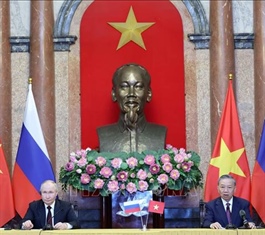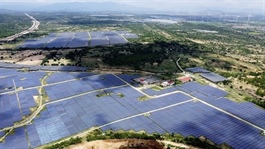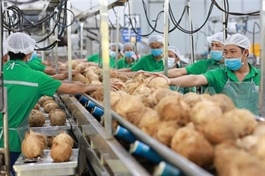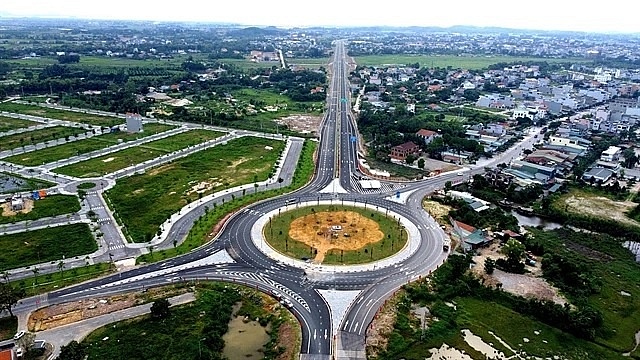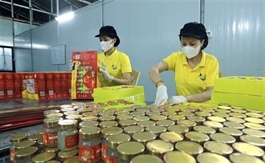Inflation warning ahead of fuel hikes
Inflation warning ahead of fuel hikes
A potential rise in inflation in the second half of the year’s end may be seen following escalating use of electricity and fuel leading to price hikes.
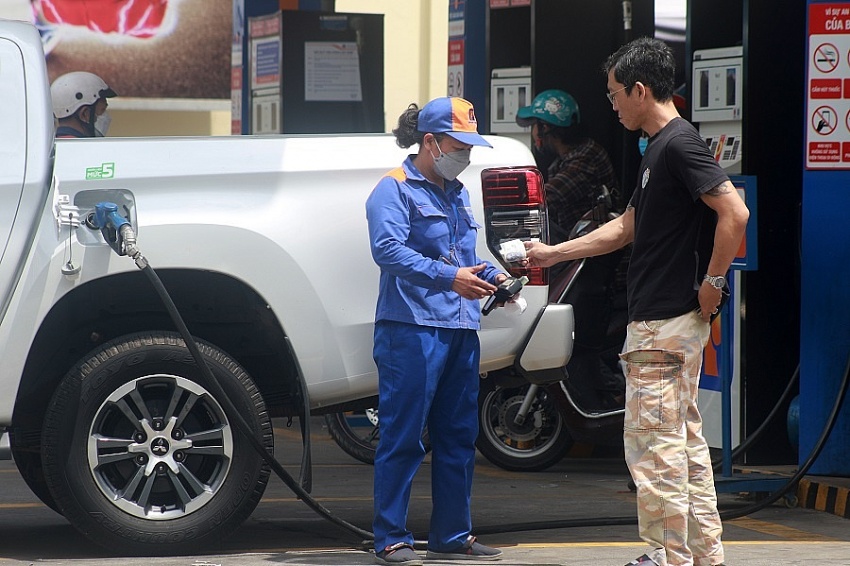
The Ministry of Industry and Trade (MoIT) last week warned that public demand for electricity and petrol had “suddenly been increasing since early this year,” prompting authorities to devise measures to “ensure electricity and petrol supplies,” which will help bring inflation under control, at about 4 per cent as set earlier by the government.
Fresh figures from the MoIT showed that in the first five months of this year, the electricity volume consumed increased 12.1 per cent on-year – this has outpaced the initial scenario of an on-year rise of 8-9 per cent.
Since late April, scorching and prolonged sunny weather throughout the country has resulted in a very high increase in consumed electricity. For example, in late April, the peak volume reached 47,670MW, up 13.2 per cent on-year. Notably on May 28, for the first time in the history, the total electricity volume consumed exceeded one billion kWh.
This may contribute to a climb in prices in the market, affecting the government’s efforts to control inflation, according to the MoIT.
According to the General Statistics Office, a hike in power prices contributed to an on-year rise of 3.25 per cent in the consumer price index (CPI) last year. Specifically, the price of household electricity rose 4.86 per cent, leading to a 0.16 per cent increase.
In the first five months of this year, the CPI ascended 4.03 per cent on-year, driven by an electricity price hike of about 0.35 per cent.
The price of electricity has increased due to hot weather has been one of the main cause behind a climb in May CPI of 0.05 per cent on-month, 1.24 per cent against last December, and 4.44 per cent as compared to the same period last year, the GSO stated.
It is expected that the domestic electricity price will increase soon, following a mechanism to adjust the average electricity retail price in Vietnam taking effect in May.
Under this decision, the electricity price can be revised every three months, with the adjustment of increasing from 1 to 10 per cent. Last year, Vietnam Electricity increased the price twice, at 3 and 4.5 per cent in May and November, respectively.
“It is an imperative to closely watch the country’s power transmission situation and weather and hydrographic developments so that we can take proper and timely solutions in accordance with schemes that the MoIT has formulated based on a quarterly and monthly basis in 2024,” said Deputy of Industry and Trade Phan Thi Thang.
“This will help ensure sufficient electricity in all circumstances and for production and business activities and for people’s life.”
The government last week also asked the MoIT to intensify collaboration with relevant ministries in managing prices of items whose prices are subject to state management, including electricity and petrol, so that petrol supplies must be ensured to contribute to controlling inflation as targeted by the government.
Since early this year, petrol prices have undergone 24 times of adjustment, both increases and reductions, but in general, increases have been bigger than decreases. Last week, the petrol price also rose by an average of 60 US cents per litre.
In addition to potential rises in prices of electricity and fuel, the GSO has also warned about a rise in inflation following a 30 per cent increase in salary for those working at state-owned units, besides a potential 6 per cent climb in Vietnam’s regional minimum wage for privately owned units.
According to the GSO, psychologically, increases in salaries will often cause a hike in prices in the market, as an increase in fuel and electricity prices often do. This will also pressure the government’s efforts to control inflation.
More than a week ago, the Ministry of Finance released three possible inflation scenarios for 2024. The inflation rate is projected to increase by about 3.72, 4.03, and 4.5 per cent under three scenarios.
Meanwhile, the State Bank of Vietnam (SBV) estimates that the inflation target of 4-4.5 per cent this year may be reachable, but it said that many significant pressures in the latter half of 2024 will increase, in addition to many unfavourable factors that could be prolonged both inside and outside the country.
“It is requested that ministries and sectors continue to provide consultancy for the government to limit negative impacts on prices in the domestic market, ensuring the balances of supply and demand of indispensable item groups such as food and foodstuff, electricity, and fuel to help stabilise prices,” said SBV Deputy Governor Pham Thanh Ha at a meeting of the Steering Committee for Price Management of the government organised on June 12 in Hanoi.
“The SBV will continue to offer flexible and proactive measures to help stabilise the macroeconomic situation and control inflation,” Ha said.
The World Bank has projected that inflation in Vietnam is projected to pick up slightly from an average 3.2 per cent in 2023 to 3.5 per cent in 2024.
“This projection reflects an expected increase in government-administered prices, such as education and health services which constitute 6.17 and 5.4 per cent, respectively of weight in the CPI basket,” the World Bank said. “On the other hand, despite the continued conflicts in Ukraine and the Middle East, oil and commodity prices are tipped to soften slightly in 2024. The CPI will moderate to 3 per cent in 2025 and 2026 based on the expectation of stable commodity and energy prices.”
Meanwhile, according to the Asian Development Bank (ADB), the monetary policy in Vietnam will pursue the dual objectives of price stability and growth, even as policy space is limited. Inflation is expected to edge up in tandem with the economic revival.
“The expected slowdown in the global economy in 2024 could tame global oil prices and consequently ease inflationary pressure,” the ADB said. “Inflation is forecast to rise slightly to 4 per cent in 2024 and 2025. Though the inflation forecast remains below the 4–4.5 per cent target, near-term pressure may persist from geopolitical tensions and disruptions of global supply chains.”
Global analysts FocusEconomics also said, “In 2024, our panel expects inflation to average below the government’s 4–4.5 per cent target. Higher-than-expected food prices pose an upside risk,” it said. “We see consumer prices rising 3.6 per cent on average in 2024, and climbing 3.4 per cent on average in 2025.”






